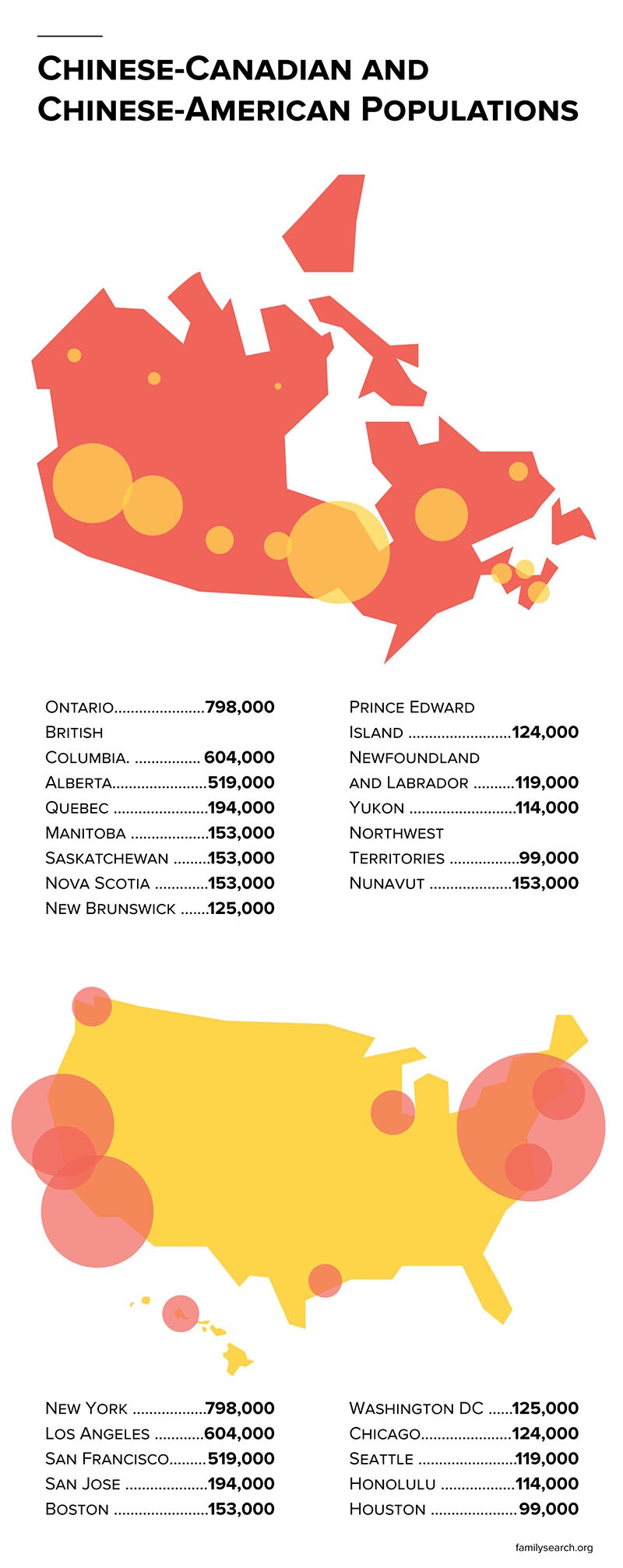Nearly 2 billion people in the world today have Chinese ancestry. China, the most populous country in the world, is home to 1.4 billion people, and another 50 million people with Chinese heritage live outside its borders. An early wave of Chinese immigrants came to Canada and the United States between the 1850s and 1880s. Others arrived more recently. Learn the stories of your Chinese American and Chinese Canadian ancestors and the enduring legacies they created in their adopted North American countries.
Early Chinese American Immigrants

Immigrants from China began arriving to the western United States and Canada in significant numbers during the mid-1800s. Lured by the discovery of gold, most were working men who came without their families. When they found no success in the gold fields, thousands took jobs building the Transcontinental Railroad in the United States and the Canadian Pacific Railway in British Columbia.
Chinatowns and Chinese Exclusion in North America
When not working on job sites in remote areas, Chinese workers generally clustered in urban neighborhoods. Initially, these“Chinatowns” were located in large cities of western North America, such as San Francisco and Los Angeles in the United States and Vancouver in Canada.
New Chinese American Immigration to North America

After restrictions were lifted in the 1940s, Chinese immigration to North America gradually resumed. Political and cultural changes in China further motivated some families to leave.
In recent decades, most Canadian arrivals have settled in Ontario— Toronto’s Chinatown is home to more than 400,000 residents of Chinese origin. Many have also settled in British Columbia—nearly 350,000 Chinese Canadians live in Vancouver. Alberta and Quebec are home to smaller, but significant, Chinese Canadian communities.
The 2016 Canadian census counted 1.8 million people of Chinese origin. Their numbers continue to grow, and Chinese is the country’s most-spoken language after English and French.
Chinese workers faced severe prejudice in North America because of racism, cultural differences, and language barriers. After a financial panic in North America in 1873, competition for jobs became fierce. Laborers united against Chinese workers. In the 1880s, both Canadian and United States governments passed laws to limit or prohibit Chinese immigration. Other discriminatory laws and practices made life more difficult for residents of Chinese origin, who were still mostly men.
In the United States, the replacement of national quota immigration laws in 1965 with policies favoring family reunification led to an increase in arrivals of Chinese families. In the decades that followed, many immigrants came from Hong Kong, Canton, Taiwan, Fukien, and North China. Most people initially settled in the historical Chinatowns of San Francisco and Los Angeles, but many also settled in the growing Chinatowns of New York City, Chicago, and Seattle. The Chinese population in the United States has risen steeply since 2000, from about 3 million to about 5.5 million in 2019.
Find Your Ancestors on FamilySearch
FamilySearch’s online record collections can help you find your Chinese Canadian or Chinese American family. Learn how to use FamilySearch’s online records to find your ancestors and connect them to your family tree.
Learn About Your Chinese Ancestors
At FamilySearch, we care about connecting you with your family, and we provide fun discovery experiences and family history services for free. Why? Because we cherish families and believe that connecting generations can improve our lives now and forever. We are a nonprofit organization sponsored by The Church of Jesus Christ of Latter-day Saints. To learn more about our beliefs, click here.











